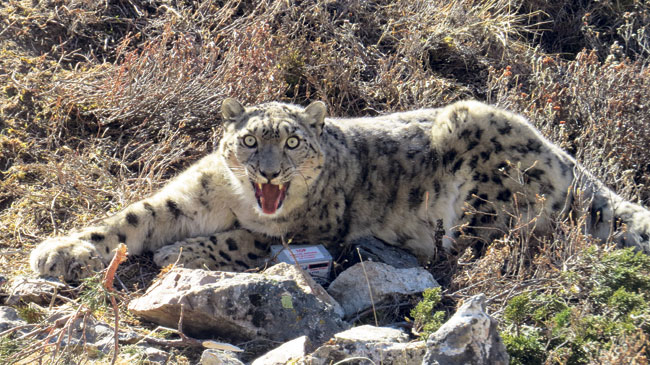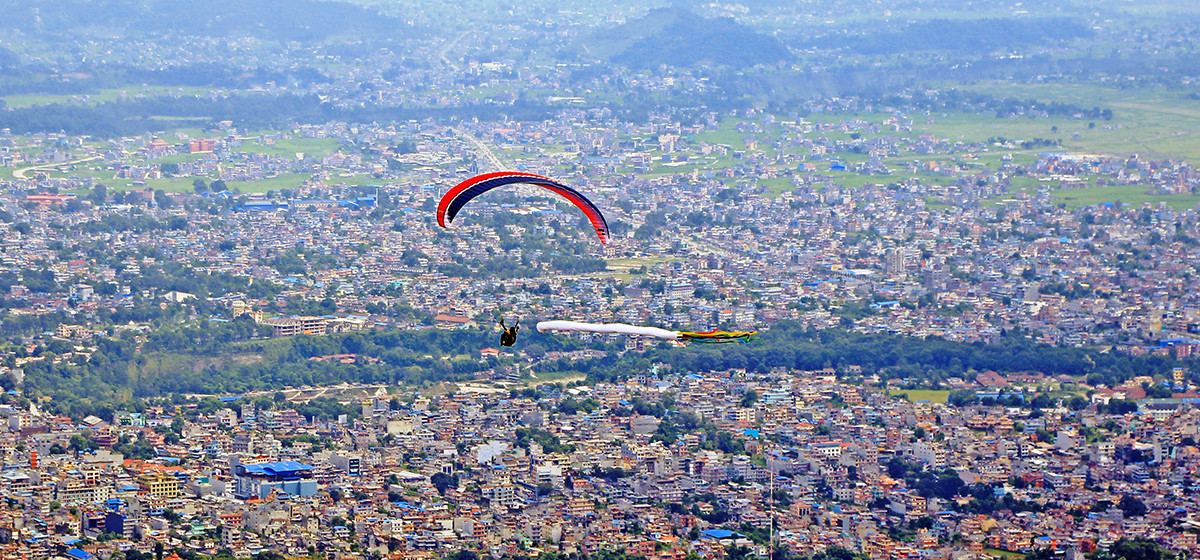
OR
The predator and the prey
Published On: October 21, 2016 09:04 AM NPT By: Simrika Sharma/Mamata pokharel
On Sunday, October 23, the world will be celebrating the third International Snow Leopard Day. The day was first celebrated in 2014, to mark a historic agreement between 12 snow leopard range states that culminated in the Global Snow Leopard and Ecosystem Protection Program.
On this occasion, WWF Nepal is organizing a participatory art event at 3 pm in Patan Museum Courtyard to “lend a hand for the snow leopard.” Participants will contribute their hand prints for a community canvas. When all human prints come together, a beautiful piece of art will be revealed. There will be live music by Kutumba.
 Andy Rouse / Naturepl.com /Wwf
Andy Rouse / Naturepl.com /Wwf
The God’s Pet
Have you ever heard of snow leopards? This beautiful, mysterious, endangered cat lives in the south and central Asia’s high mountains and is extremely elusive. The snow leopard also known as “The God’s Pet” is the top predator and an important indicator of the healthy Himalayan ecosystem they call home. Nepal is one of the twelve countries in Asia which hosts an estimated 300-500 snow leopards in the high Himalayas.
 Kamal Thapa / Wwf Nepal
Kamal Thapa / Wwf Nepal
The science behind snow leopard conservation
One of the latest tools to study the habitat, movement and ecology of snow leopard is through the data received from the satellite-GPS collar fitted on a snow leopard. Through the GPS collar, conservationists are gathering new insights into the snow leopards’ movement patterns, critical and core habitat use and preferences, including trans-boundary habitat linkages and climate resilient habitats. Ghangjenjwenga was the first snow leopard to be fitted with a satellite-GPS collar in Nepal in 2013. Two more snow leopards have been collared since then, the last one collared in 2016 being a female. It is believed that there are fewer than 7,000 snow leopards in the wild. These magnificent animals are facing an uncertain future. Poaching, loss of prey and habitat, and conflict with local communities have put these cats in real danger of disappearing forever, and now climate change is threatening their home. Snow leopards are also being killed for their beautiful fur, and their bones and other body parts are also used in Traditional Asian Medicine.
 Wwf Nepal
Wwf Nepal
Communities and snow leopard conservation
Snow leopards might live in remote areas, but our mountain communities live side by side with them, and are actively working to conserve them. Himali Chungda, a citizen scientist and chairperson of the community-based snow leopard conservation committee in Ghunsa Village hasbeen playing a key role in identifying snow leopard hotspots for tracking purposes through ongoing camera trap monitoring operations and participating in the collaring operations. He feels the snow leopard conservation program is aiding the overall understanding amongst the local communities on the importance of protecting the species, and building local capacity and commitment towards snow leopard conservation.
You May Like This

Sci-fi villain 'Predator' returns in action-thriller prequel 'Prey'
Thirty-five years after the extraterrestrial monster movie "Predator" made its first outing, the creature is back in action in the... Read More...

Rohingya refugees falling prey to human traffickers
DHAKA, May 3: Rohingya refugees, who fled to Bangladesh since late August last year to escape the inter-communal violence in... Read More...

Agents prey on female migrants as govt bans domestics outflow
KATHMANDU, April 26: Maya (name changed) knew that the government has banned the sending of female domestic workers abroad. ... Read More...
Just In
- CPN (Unified Socialist) to hold its Central Committee meeting on May 10-11
- Over 16,000 paragliding flights conducted in one year in Pokhara
- MoPIT prepares draft of National Road Safety Act, proposes rescue within an hour of an accident
- Light rainfall likely in hilly areas of Koshi, Bagmati, Gandaki and Karnali provinces
- Customs revenue collection surpasses target at Tatopani border, Falls behind at Rasuwagadhi border in Q3
- Rain shocks: On the monsoon in 2024
- Govt receives 1,658 proposals for startup loans; Minimum of 50 points required for eligibility
- Unified Socialist leader Sodari appointed Sudurpaschim CM



















Leave A Comment